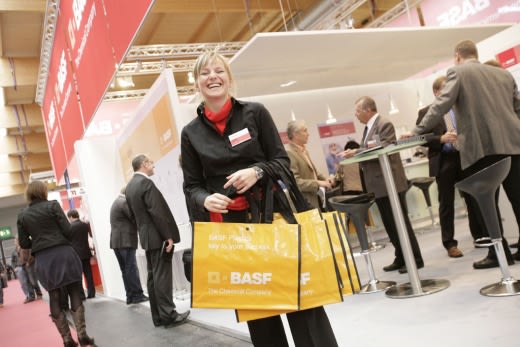 We publish an article written by Prof. Dr.-Ing. Martin Bastian, who is managing director of the Southern German Plastics Centre. His text is related with the current situation in the plastics market.
We publish an article written by Prof. Dr.-Ing. Martin Bastian, who is managing director of the Southern German Plastics Centre. His text is related with the current situation in the plastics market.The market situation for German plastics processors has been characterised by noteworthy growth during the first half of the year amounting to 13%, but profits are still unsatisfactory above all due to rising, and highly volatile energy and raw materials prices.
At the moment, we tend to discern a positive overall mood within the industry, and a sideways trend at an adequately high level can be anticipated for the coming months. Expectations are being dampened by the raw materials price situation and its ongoing development resulting from the consequences of Germany’s revised energy policy which are still difficult to assess, the difficult to estimate consequences of the unstable situation within the financial markets and, of course, the uncertainty of the outlook for the global economy.
Growth during the first half of the year was generated for the most part by the packaging sector, consumer goods and technical components. Minimal growth was achieved by, for example, building materials. The number of companies climbed once again in 2011 by more than 4% to over 2700, thus approaching the level that prevailed in 2009, and utilisation of production capacity is noticeably greater than 80%. The fact that the number of employees in the plastics processing industry has increased by 5.5% to more than 285,000 is also encouraging.

The market situation and the developments we can expect are, of course, closely linked to important trends in technological development. All in all, a great deal will depend upon further piece price reductions, energy-optimised production and improved sustainability with regard to product use.
Accordingly, for example, consistent further development in the field of lightweight construction will be important. Adequate progress is being made in this area, for example with organic sheet, reinforced compounds, foams and hollow glass micro-spheres, and of course functions integration and automated manufacturing technologies as well.
Continuous increases in the specific performance of the utilised machines are also providing the industry with corresponding potential. Significantly higher torques now available for compounding are an impressive example in this respect.
The push towards greater energy efficiency should be pursued by means of holistic approaches. However, individual aspects such as modern drives for machines, reduced maximum pressures for compressed air supply and compressed air reservoirs which are matched to actual needs will also help lead us to the desired result. Direct processing procedures, for instance for the production of high content and continuous strand-reinforced components, also represent an attractive opportunity for increasing energy efficiency and economy and, at the same time, making it more difficult for competitors to copy products.
Improving sustainability by using renewable raw materials (to a greater extent) is a further dominant trend, which is resulting in further development along these lines. Bioplastics and compounds will be presented at numerous booths at the trade fair. Unfortunately, “bio” is frequently equated with ecology, or even sustainability, without actually balancing the account. In this respect, incidentally, it’s important to make a case for maintaining credibility for serious, comprehensive evaluations of products over their entire life cycle, and to consistently avoid any “greenwashing” whatsoever. An honest, comparative balancing of accounts still needs to be established in this respect.


